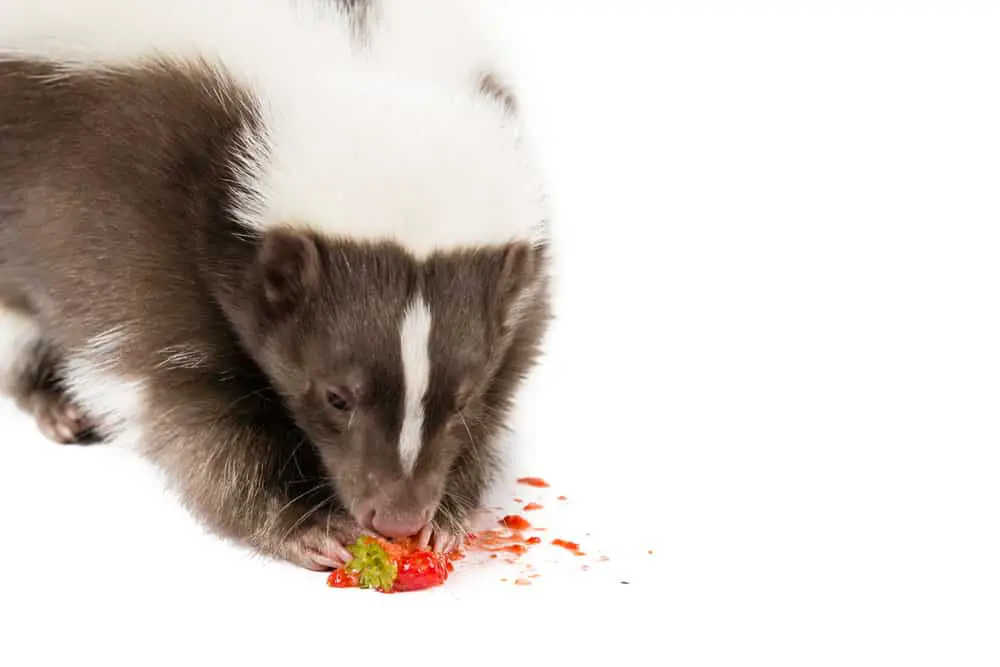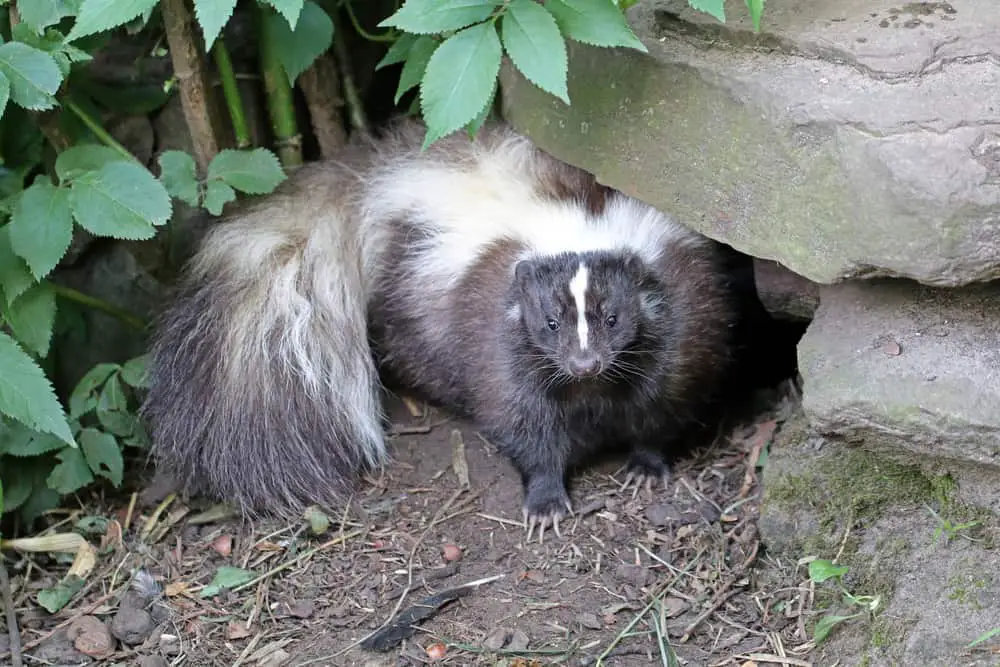As adorable as skunks are on a screen, when you encounter one in your yard or, even worse, under your porch, they suddenly seem way less cute. Skunks can and will burrow anywhere they can and love to squeeze into very small gaps.
If you want to keep your house from becoming a shelter for wild animals, you are going to need to make sure your fences have no large gaps, and your crawl spaces are secured. Skunks can move into your yard and make for unpleasant surprises.
How Small of a Hole Can a Skunk Fit Through?
Skunks have the amazing ability to flatten themselves to squeeze into small spaces. Depending on whether it’s a larger striped skunk or a smaller spotted skunk, it can shrink to 75% of its total body size. That means baby skunks can sneak in almost anywhere. But what size hole can a skunk fit through?
The average size of the entry hole to a skunk’s burrow is 3 to 5 inches wide. These mammals hunt at night, so they spend their days sleeping in their dens. To stop even tiny baby skunks, you will want to make sure crawl spaces, porch accesses, and other entry points are fully secured.
A skunk can’t fit through a lattice that is smaller than 2 inches wide. If you make sure that none of the entry points under your house are larger than that, you can be fairly sure skunks won’t get in. But the best way to prevent skunks is to find out what attracts them and remove those temptations from your yard.
What Attracts Skunks?

Skunks come out of their dens every night from spring to fall. They love to hunt for food and eat a varied diet. Their favorite foods are common in our yards and gardens. Skunks also need places where they can comfortably hide from predators and raise their young.
- Grubs, insects, and bugs: Japanese beetles are a favorite of skunks and also a sign of an unhealthy garden. Fixing your garden can eliminate this skunk snack.
- Fruit and vegetable waste and scraps: Compost piles can become buffets for skunks if they are not properly sealed or caged in. Trash cans can also be knocked over and dined on.
- Pet Food and Bird Feeders: Skunks don’t know that’s not their food; if you leave it out overnight, you could attract skunks. Pet food left out and uncovered or animal feeds not stored correctly can attract skunks.
- Warm, dark, cramped spaces: Any place under your house or in your yard that is safe for a skunk and near a food source needs to be sealed. If you can map sure there are no gaps larger than 2 inches and that your foundation is covered by 2 inches of dirt, you can keep skunks out.
How To Stop Skunks from Entering Your Home?
In some areas, skunks are as populous as rabbits and can pose a real problem. Their tell-tale smell is unforgettable, and something all of us would rather not experience. If you, a pet, or a child are ever sprayed, you know weeks of tomato soup baths are in order.
Barrier: Keep skunks from coming into your house by making sure they can’t find what they want. If possible, a perimeter fence with no gaps and several inches buried will keep out most critters. Inside a yard, removing food sources and adding wire mesh around gardens, composts, and yard waste can prevent skunks from moving in.
Repellent: If skunk visits are likely, then repellents can be an excellent way to deter these visitors. In general, the best way to discourage wildlife invasions is to make food access more difficult than its worth. Kitty litter placed around likely skunk dens can stop them from moving in or coming back after a night of hunting.
Citrus and predator urine can also deter skunks and help remove any that have stopped by. Mothballs and skunk-repellent granules can be added to keep skunks away.
Signs You Have Skunks and How to Remove and Prevent Them
It is entirely likely that you will smell a skunk before you see one. A faint musky odor that lingers in the early morning or becomes strong in the evening could indicate a skunk is living nearby. You can also see small holes in your lawn that are the result of skunks foraging for grubs.
You may notice claw marks around openings under porches and near crawl spaces. Scattered yard litter and droppings can also indicate skunks nearby. If you don’t want skunks, you will need to prevent them from coming onto your property. If you already have them, you will want to remove them as humanely as possible.
The easiest way to remove a skunk is to make it difficult to return to its den. Placing a motion-activated sprinkler or a sensor for bright lights can scare them off. You can also use ultrasonic skunk repellers to make living in your yard undesirable.
Smell deterrents like ammonia, citrus, and cat or dog urine can keep skunks away. Having a pet that is in the yard at night will also keep skunks away.
| Sign | How to Remove | How to Prevent |
| Musky Skunk Smell | Citrus and ammonia | Perimeter fence |
| Holes in lawn | Apply a layer of compost | Skunk repellent granules |
| Scratches near entry points | Kitty litter around the entry holes | Seal all access points |


